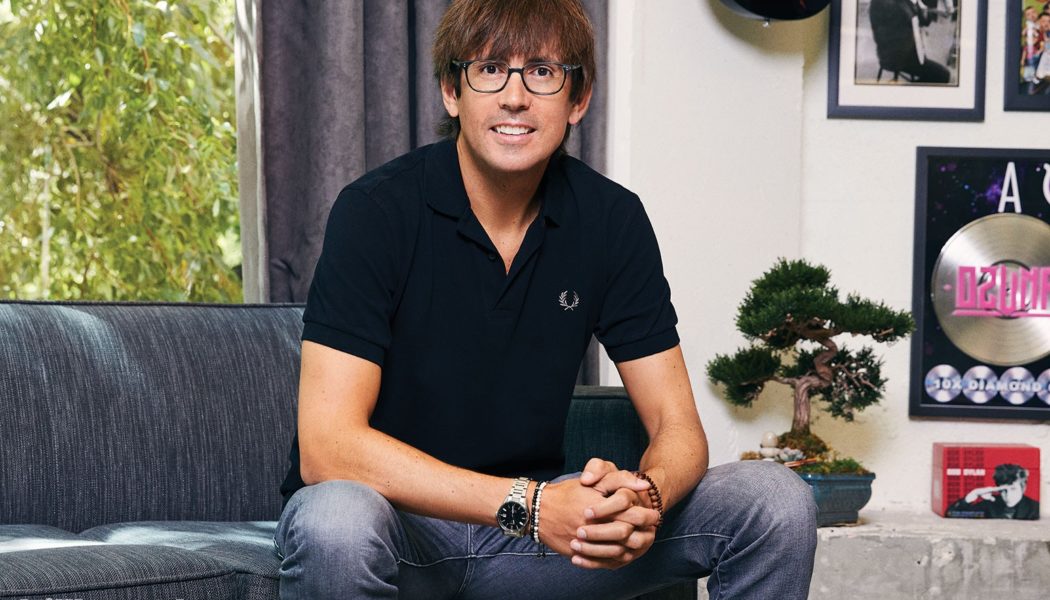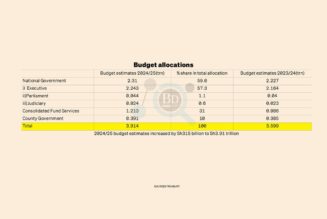Gallardo has been doing that by trying new things, both musically and commercially. Encouraging artists like Rauw Alejandro (“Todo de Ti”), Farruko (“Pepas”) and Camilo (“Kesi”) to venture outside of reggaetón has paid off with the biggest hits of their respective careers. And building out Sony Latin’s business intelligence department — which parses data to help inform A&R, marketing and sales strategies — helped identify Rochy RD’s “Ella No Es Tuya” as it was gaining momentum on Dominican independent label Vulcano Music. The Sony Latin remix hit No. 30 on Billboard’s Hot Latin Songs chart, and was an even bigger sensation in Spain and South America.
With each step, Gallardo is keeping an eye on the future. “As a label, we need to reinvent,” he says. “Nowadays, artists can put their music out from their computer. So why do they need us? We need to ask that question of ourselves.”
Alfonso Duran
“Alebrijes are magical creatures from Mexican culture,” says Gallardo. “I bought this alebrije rabbit in Oaxaca and it has been with me since 2010.”
In 2017, “Despacito” kicked down the door for Latin music in the United States. Did the pandemic slow that growth?
“Despacito” was, and is, an iconic moment. But we were seeing something happening prior to “Despacito.” I remember that [in 2016] we had Ricky Martin’s “Vente Pa’ Ca” becoming a huge global hit, CNCO’s “Reggaetón Lento,” Shakira’s “Chantaje” with Maluma — those songs were exploding outside of the Latin markets. And we had seen other Latin explosions, like in the ’90s with Ricky Martin, Jennifer Lopez, Marc Anthony and Shakira. But to me, the difference was that back then it was about a small group of artists. Now, it’s about the entire Latin culture taking over. You find hit songs coming from newcomers and established artists, and that kind of curve that started in those years definitely continued over the pandemic. That hasn’t diminished.
Do you feel that the industry is more singles-driven than ever?
Yeah, 100%. In the physical days, you released the album and then you worked the first single, second single, third and fourth singles — the album was the kickoff of something. Now, the album is like the conclusion — you wrap it up and you start on something fresh. Sometimes it’s just a collection of songs. Obviously, different artists have different approaches. We have a big roster, and we still have artists that approach an album as a coherent piece of work. But the more mainstream artists, I’d say, are definitely more singles-driven.
Has that changed how you approach artist deals?
Yes and no. We still consider an album as a collection of songs, and when we negotiate deals we still talk about albums. But when we get into the details, we talk about how many songs that album should contain, how many singles should be released prior to the album. Because when you release one single that brings in numbers, and then another and another before the album, you have created momentum. If you release an album all of a sudden, you lose that buildup. The way the [digital service providers] work now it’s very hard to work a new single from an album that is one or two months old, because the music is already available. So sometimes in deals we specify, “Prior to the album, we need this specific number of singles.”
Alfonso Duran
Cards used in the stop-motion music video for “Uh Uh Uh!” by Gallardo’s former band Landa, and a Carlos Santana guitar signed by the artist. “I was A&R on two of his projects in 2014, and it was a dream come true. He has been one of my idols since I was a teenage guitarist.”
How have deals evolved?
In the last few years, there has been a huge transformation. As a company we need to be very flexible, because every artist has a different need. Some lean more into distribution, because they already work independently; there are others where ownership is important, so a license would be better. For others, a direct, traditional signing is where they get the best support and full service from all the different areas of the label. So, yes, we’re seeing a change and it’s toward more diversity. No two deals are identical.
How involved are you with your artists’ branding and merchandise deals?
We have a department that is extremely active. We did a deal with Paloma Mami and Bershka in Spain for a clothing line designed by her. We recently closed a deal with LaLiga, the Spanish soccer league, to make Camilo’s single “Kesi” its official song. So, prior to a Real Madrid or Barcelona game, you’ll see the advertisement with the song. We did a deal with Bacardi and Leslie Grace on a song that has been promoted all over the world. We’re nonexclusive, so the fact that we bring in deals doesn’t mean that artists can’t do deals independently. And we try to cross-pollinate their latest release with the activation — the Camilo song with LaLiga is his current single, so that activation is helping to promote it.
How do you use mainstream pop collaborations — like Camilo’s “Kesi” remix with Shawn Mendes — to further an artist’s career?
Collaborations have been one of the cornerstones of the Latin explosion. Streaming came along with the explosion of social media, so when an artist invites others to collaborate, it’s not only about the artistic angle, it’s also about bringing in their monthly listeners and social media followers. It’s very strategic, but it shouldn’t be done just for numbers. If it doesn’t make sense artistically — if the artists invited to collaborate don’t make the song better — those numbers are probably not going to work. Having said that, I’m excited to see that it’s not mandatory to have collaborations. Rauw Alejandro and Farruko are alone on two of the biggest songs in the Latin ecosystem this year. Last year, it was Maluma’s “Hawa’i.” I don’t believe a good song needs three or four artists on it to make it a big hit. But when that mix of artists makes it more exciting, it’s totally legit.
Alfonso Duran
“I found this table on the internet and couldn’t resist. It is a great icebreaker.”
How important is your business intelligence division, and what kind of things has it allowed you to do?
We have different approaches. For example, in A&R, we have business intelligence identifying what is happening in the Latin region, what song by a new artist is having a surprising result, what new group is making noise here or there. Paying attention to an entire continent is impossible for any A&R, so bringing business intelligence to that helps a lot. But it helps in almost every area: In new business, it helps to find which artists are aligned with a particular brand’s vision or customer and what they want. In marketing and sales, in analyzing consumption: Are we doing as we expected or are we underperforming in a market? What are the reasons? What audiences are we attacking? Is a song resonating with a specific target demographic or is an older target the one that is connecting? This information helps our decision-making. But that doesn’t mean it drives our decision-making. At the end of the day, you still need to believe in your gut and trust your artist.
What songs or artists has this helped?
Business intelligence identified that something was going on with [Rochy RD’s] “Ella No Es Tuya.” That was step one. Step two: An A&R stepped in and added value by doing the remix with Nicki Nicole and Myke Towers. And then we had an amazing hit.
What trends are you watching in Latin music?
Latin music is going to continue growing. The urban, reggaetón genre — which has been the leading one for the last few years and has been opening so many doors — is going to transform into many other styles. We are seeing that already with “Todo de Ti” and “Pepas.” There is a new pop coming that is not the traditional pop of guitar, drum and bass, but that takes something from the urban world, takes something from the electronic world. In the next few years we are going to see genres mixing with each other and different flavors.
Obviously, we see more and more presence from Latin artists in the general market. One great example is early next year, Maluma has a major role in a major Hollywood movie, Marry Me, with Jennifer Lopez. And Leslie Grace — who has been with the label for many years and who was recently in In the Heights — is starring in the Batgirl movie. More and more, Latin culture is part of general U.S. culture and the global culture.
Alfonso Duran
Rauw Alejandro presented this illustration to Gallardo, which depicts the Sony team that worked on his successful first album, Afrodisiaco.











